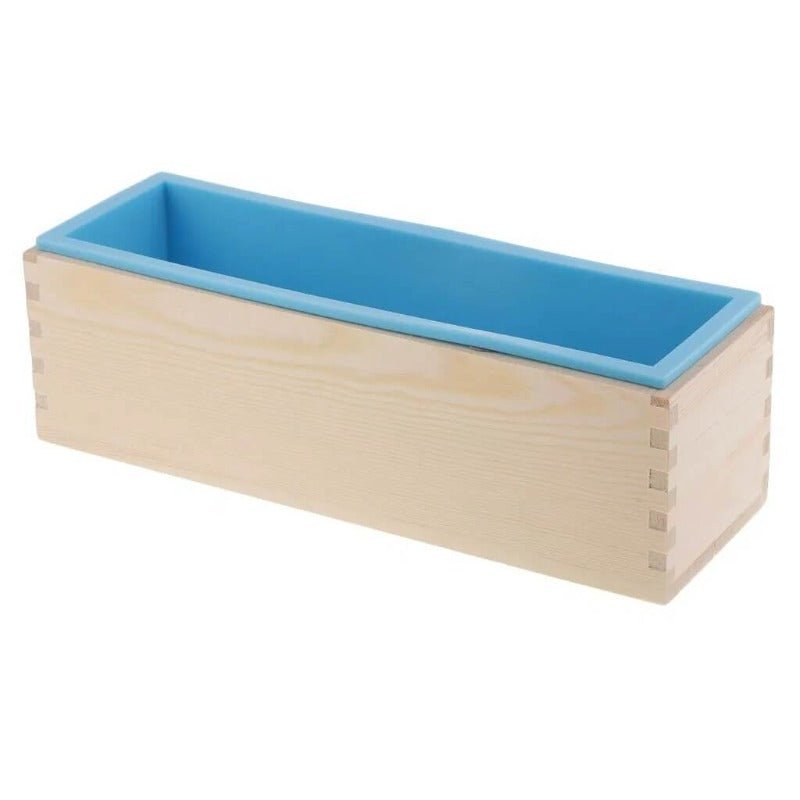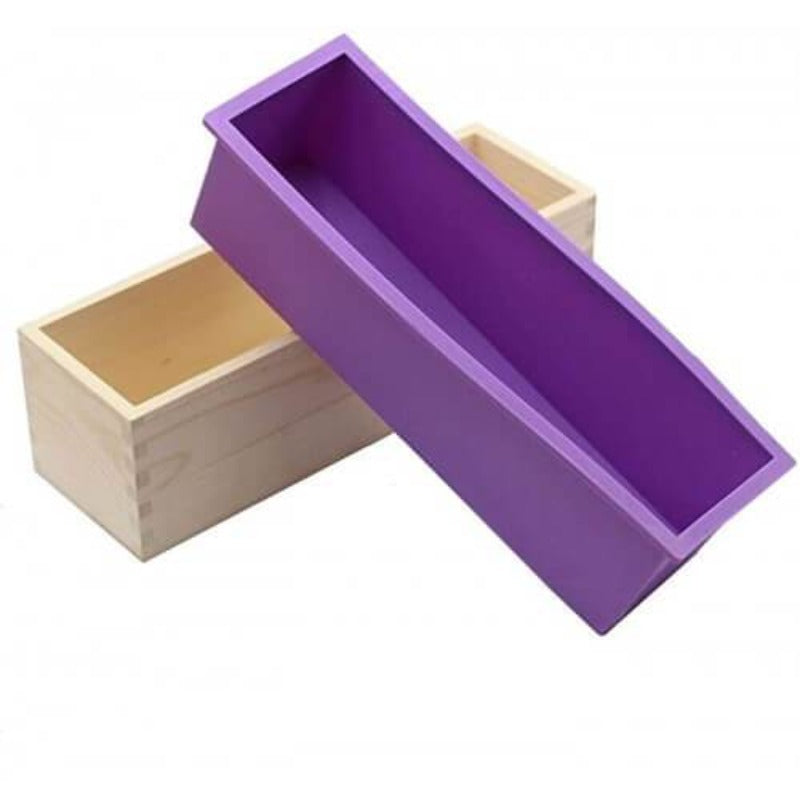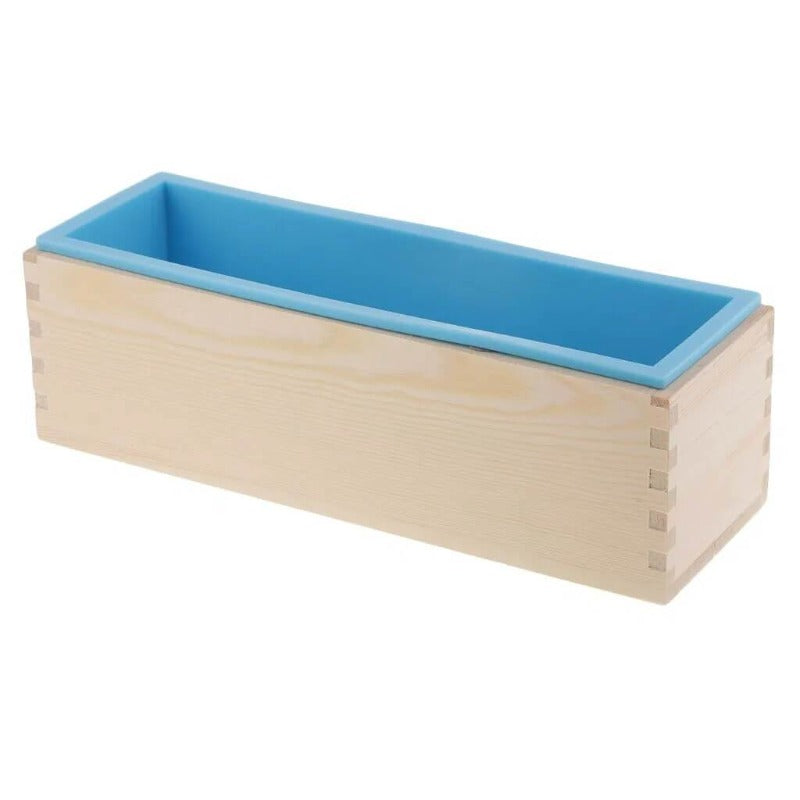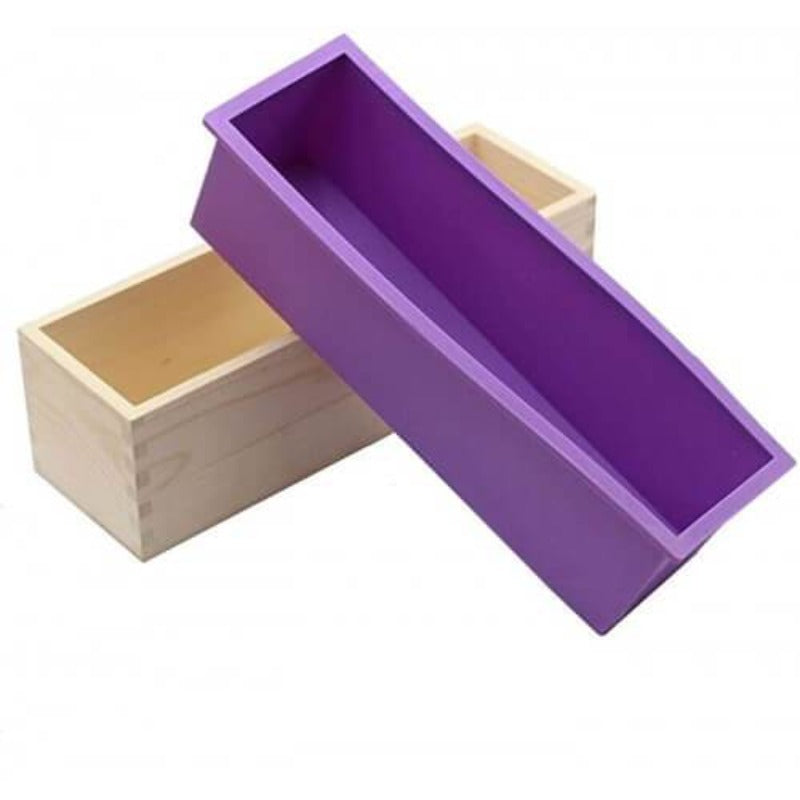Silicone Loaf Soap Mold With Box
Silicone Loaf Soap Mold With Box
Out of stock
Couldn't load pickup availability
This food grade silicone loaf mold is perfect for making soaps. With the wooden box and non-stick silicone inner, your soaps will turn out perfectly shaped every time.
For more soap recipes: Soaps & Shampoo Bars
Uses & benefits
- Includes wooden box and removable silicone inner
- Capacity: 1200g
- Dimensions of inner: 26 x 7. x 7.5cm
- Heat and cold resistant up to 230℃
- Food grade silicone
- BPA free
- Non-stick
- Microwave, oven, freezer and dishwasher safe (within temperature ranges).
- Mold can be used for soaps, chocolate, cakes, jellies, puddings etc
Rose clay soap recipe
- A handful of fresh or dried rose petals
- 320g water, boiled and cooled or distilled
- 118g lye
- 420g olive oil infused with rose petals
- 70g rosehip seed oil or another oil such as pomegranate or even jojoba
- 225g coconut oil
- 80g shea butter
- 55g castor oil
- 2 tsp kaolin clay or pink clay for colour**
- 2 T water (you may need a little extra)
- 1 ½ - 2 tsp rose absolute, rose blend or geranium essential oil
**You may use more clay if you wish, to make an ultra creamy bar. You can either blend it in the melted oils phase before adding the lye solution, add it teaspoon by teaspoon at trace or stir it in the batter once in the mold. Try 1-2 tablespoons to start. Your soap batter may be thicker than usual and adding clay will speed up trace.
Place the rose petals and the 320g of water in a pot and heat until a gentle simmer is achieved. Turn off the heat and let the petals steep until the water has cooled, to make an infusion. If water has evaporated, top it up to reach 320g again. Wearing safety gear, add the lye to the rose water and stir until combined. The colour of the water may turn a deeper hue but that is normal. Set the lye solution aside to cool down to between 38 and 43 degrees. Melt the coconut and shea butter, and add the other oils to the melted mixture. Allow to cool to between 32 and 38 degrees. You may now add in the additional clay, if using, otherwise add it in one teaspoon at a time at trace or stir in right at the end before molding. In a separate bowl, combine the essential oil, clay and 2 T of water. This will be added at trace or after cooking depending on whether the hot or cold process method is used.
Combine the lye solution and the oils. Blend with a stick/immersion blender for 30 seconds then hand mix to ensure everything is well mixed. Continue to alternate mixing by blender and by hand until trace is achieved.
For cold process: continue alternating immersion and hand blending until trace is reached, then add the clay mixture and mix gently but well until it is dispersed. Pour into molds and leave to set for a day or two, then unmold and cure for 4 to 6 weeks.
For hot process: pour the soap batter into a pot or slow cooker and cook on very low heat for about an hour (sometimes less), stirring every 15 minutes. Once cooked, stir in the clay mixture and pour into molds. Leave to set overnight then unmold. You can use the soap straight away, although leaving the bars to cure for a few weeks is always recommended.
You can embed some dried rose petals on the top of your soap while the batter is still soft in the mold. The petals will eventually fall out in the shower but it makes for a stunning effect.


Perfect size mould. Good quality too.
Excellent quality, perfect size and so easy to use and clean. Also very quickly delivery, thank you Essentially Natural.
Great service thank you. Very excited to start on my Soap making next week, just waiting for a few odds and ends to arrive.
As per usual: Fantastic service and fast delivery of a great product. The added bonus present is also an obvious winner.
Bought this mold so I can keep soap shape, I love that the wooden box does that. Made my first loaf this week and it came out great!


